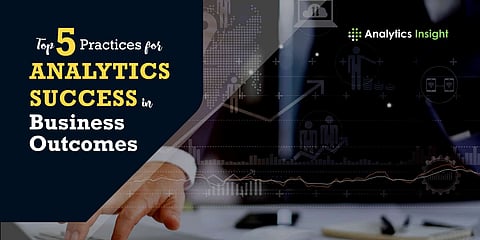
- Insights
- Cryptocurrencies
- Stocks
- White Papers
- Industry
- Geography
- Insights
- Cryptocurrencies
- Stocks
- White Papers
- Industry
- Geography


By the year 2022, only 20% of analytics insight would be able to deliver successful business outcomes.
Organizations are smitten with data. A successful business demands smart data analytics. However, despite the resources invested by the organizations for data analytics, many of them are unable to meet the desired expectations. A report by Gartner states that by the year 2022 , only 20% of analytics insight would be able to deliver successful business outcomes. Prashanth Southekal, a business analytics author says that even though most companies have resources, technology, people and data, they fail to manage data and insights. That's why they do not get the desired business outcomes.
He has outlined some prominent analytics practices that would help in achieving the desired outcome.
Undoubtedly the generation of data on an everyday basis is humongous. Businesses are applying various methodologies for drawing meaningful insights from the data, but still are unable to reach the desired goal. Instead of focusing on the answer that could dictate the data model, organizations are more determined to collect huge amount of data. This makes the task of assembling and segregating data time-consuming.
Southekal outlines three major types of classification of data that would assist in drawing out meaningful insights. One when the data is collected, it must be stored as reference data, which covers business categories such as plants, currencies and line of business, master data, which includes suppliers, products and customers, and transactional data, which involves purchase orders, invoices and payroll runs.
The data that is collected by companies is often either not correct, or is not enough to draw meaningful insights. While many companies wait to collect the proper data, Southekal points out that for successful analytics, perfection is not necessary, but focus must be given at progression.
Southekal says that if the organizations are unable to retrieve quality data then it can be acquired, either through purchase from providers or from open source resources. Another method of sampling the data will make the data more useable, and will reduce the cycling data. Moreover, Southekal suggests feature engineering as another option where machine learning models can be leveraged in existing data set, domain expertise and intuition into smarter data tuned for analytics.
Southekal emphasises that instead of making efforts to channel analytics projects, organizations must focus on analytics products. This approach will be lucrative for business performance and will garner financial benefits from data insights. This approach also broadens the horizon of improvement and smart decision making.
Another practice for drawing maximum benefits from the analytics is to keep in focus the stakeholders goals. As they are an important entity for a successful business, the engagement and support of stakeholders must be initiated at the early levels of analytics operations. It becomes imperative to achieve successful business outcomes, that the stakeholders' specific requirements, and assumptions must be clarified.
While organizations invest heavily on building resilient and impactful data teams, structuring analytics team is not a priority. Southekal points that for establishing successful analytics, the companies must cultivate hypothesis-based methodologies mindset, and that analytics expertise amalgamates financial or regulatory reporting to involve operations and growth revenue.
